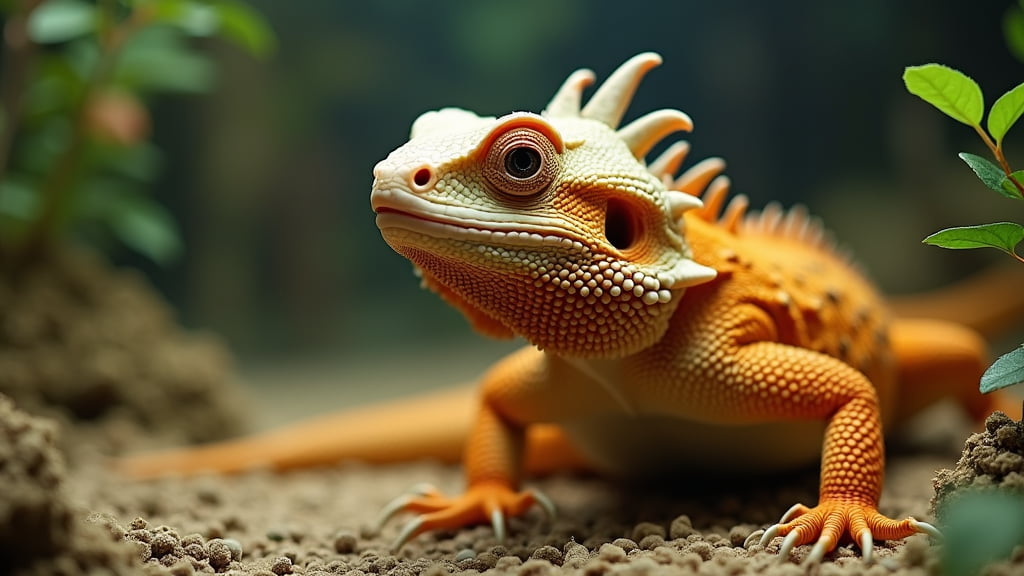Are you considering bringing a bearded dragon into your home? One of the most critical aspects of their care is their habitat. With so many options available, choosing the best tank material for your bearded dragon can be overwhelming. From glass to wood, each material has its pros and cons. Drawing on my years of experience as an exotic pet owner, I’ll guide you through the best choices to ensure your beardie thrives.
Glass Tanks
Advantages
Glass tanks are among the most popular choices for bearded dragon habitats. Here are some reasons why:
- Visibility: Glass provides excellent visibility, allowing you to easily observe your bearded dragon’s behaviour and health.
- Cleanliness: Glass is easy to clean and disinfect, which is crucial for preventing the spread of bacteria and parasites.
- Temperature Regulation: Glass retains heat well, which helps in maintaining the appropriate temperature gradient within the tank.
Disadvantages
However, glass tanks do have some downsides:
- Weight: Glass tanks can be quite heavy, especially larger ones, making them difficult to move.
- Breakability: They are more susceptible to cracking or breaking, which can be hazardous.
Best Practices
If you opt for a glass tank:
- Ensure proper ventilation: Add a mesh top to provide airflow and prevent overheating.
- Secure the top: Bearded dragons are surprisingly adept at escaping, so a secure lid is essential.
- Size matters: Aim for a tank that’s at least 120cm x 60cm x 60cm for an adult bearded dragon.
Wooden Vivariums
Advantages
Wooden vivariums have gained popularity in recent years, and for good reasons:
- Insulation: Wood offers excellent insulation, making it easier to maintain stable temperatures.
- Durability: With proper care and treatment, wooden vivariums can last for many years.
- Aesthetics: They often blend well with home interiors, making them a visually appealing choice.
Disadvantages
But there are factors to consider before choosing wood:
- Moisture Sensitivity: Wood can warp or become damaged if it gets too wet. It’s essential to treat the wood to make it water-resistant.
- Weight: Similar to glass, wooden vivariums can be quite heavy and cumbersome to move.
- Ventilation: Good airflow can be more challenging to achieve than with glass.
Best Practices
For wooden vivariums, keep the following in mind:
- Waterproofing: Use a reptile-safe sealant to treat the wood surfaces inside the tank.
- Ventilation: Install multiple vents to ensure adequate airflow.
- Cleaning: Regularly spot clean and ensure any spills are wiped up immediately to prevent wood damage.
PVC and Plastic Enclosures
Advantages
PVC and plastic tanks are becoming increasingly popular due to their unique benefits:
- Lightweight: These tanks are significantly lighter than wood or glass, making them easier to handle and move.
- Durability: PVC and plastic are robust materials that can withstand wear and tear.
- Moisture Resistance: These materials do not warp or get affected by moisture, making them an excellent choice for bearded dragons.
Disadvantages
PVC and plastic tanks also come with some cons:
- Scratching: Plastic can scratch more easily than glass, which may affect visibility over time.
- Cost: High-quality PVC tanks can be more expensive upfront compared to glass or wood alternatives.
- Aesthetics: Although functional, some pet owners feel these tanks don’t blend as well visually with home decor.
Best Practices
For PVC and plastic enclosures:
- Non-toxic: Ensure the materials are free of harmful chemicals.
- Hydration: Regularly check humidity levels, as these tanks can be more challenging to humidify properly.
- Size: Just as with glass, aim for a spacious environment to allow your bearded dragon plenty of room to move.
Conclusion
Choosing the best tank material for your bearded dragon is a significant decision that impacts their overall health and happiness. Whether you go for the classic glass tank, the insulated wooden vivarium, or the modern PVC enclosure, each has its unique benefits and drawbacks. Consider your specific needs, such as budget, space, and aesthetic preferences, and always prioritise your bearded dragon’s well-being.
Remember, the right habitat plays a crucial role in your bearded dragon’s life quality. If you have any concerns or notice any behavioural changes, always consult with a veterinarian specialising in reptiles.
For more detailed guides on bearded dragon care, check out our comprehensive care guide and what to feed your bearded dragon.
Discover the best tank materials for your bearded dragon’s habitat today!

